VERY RARE! WWII U.S. NAVY SMALL BOAT No. 12 Ensign Patrol Torpedo Boat Theater Flag



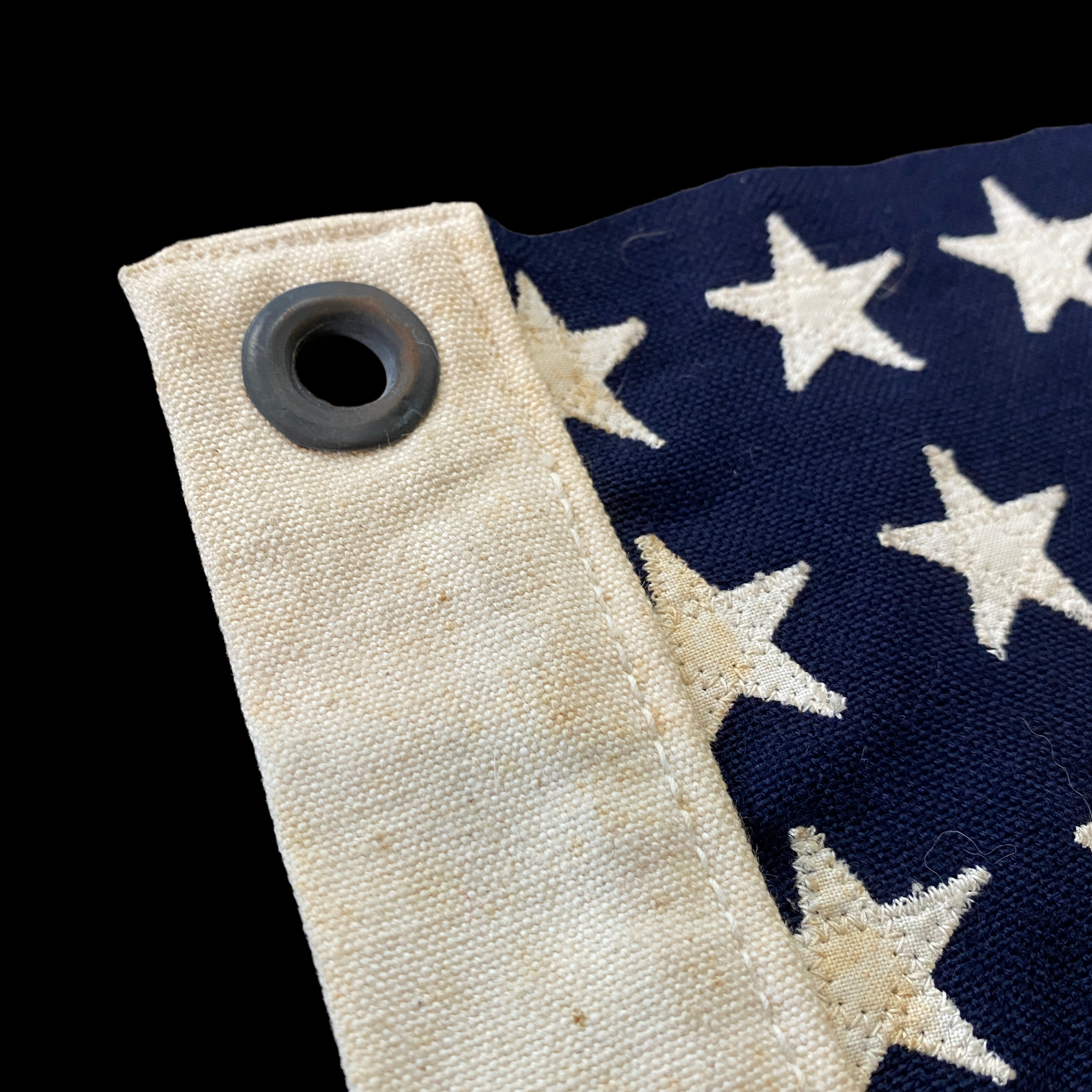

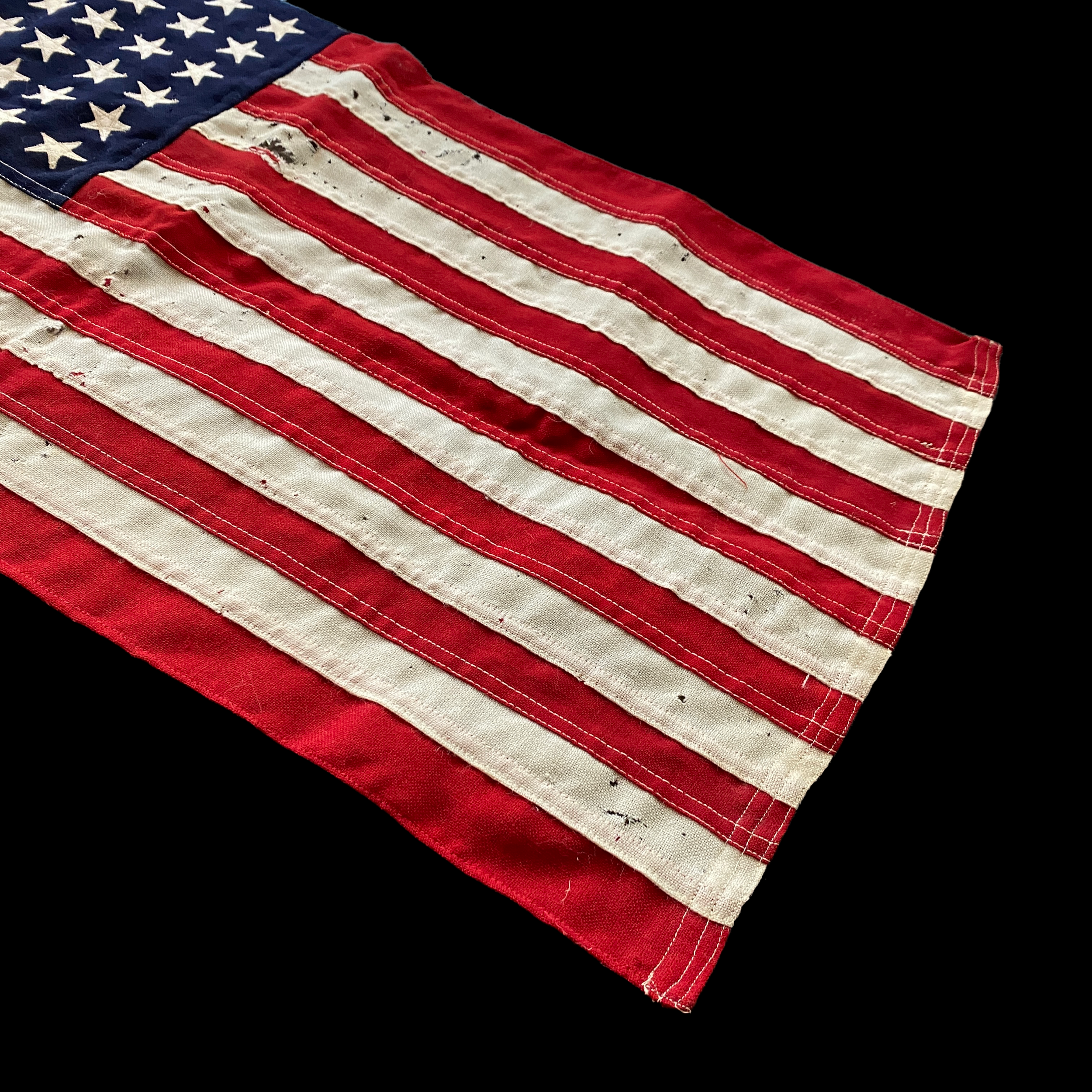
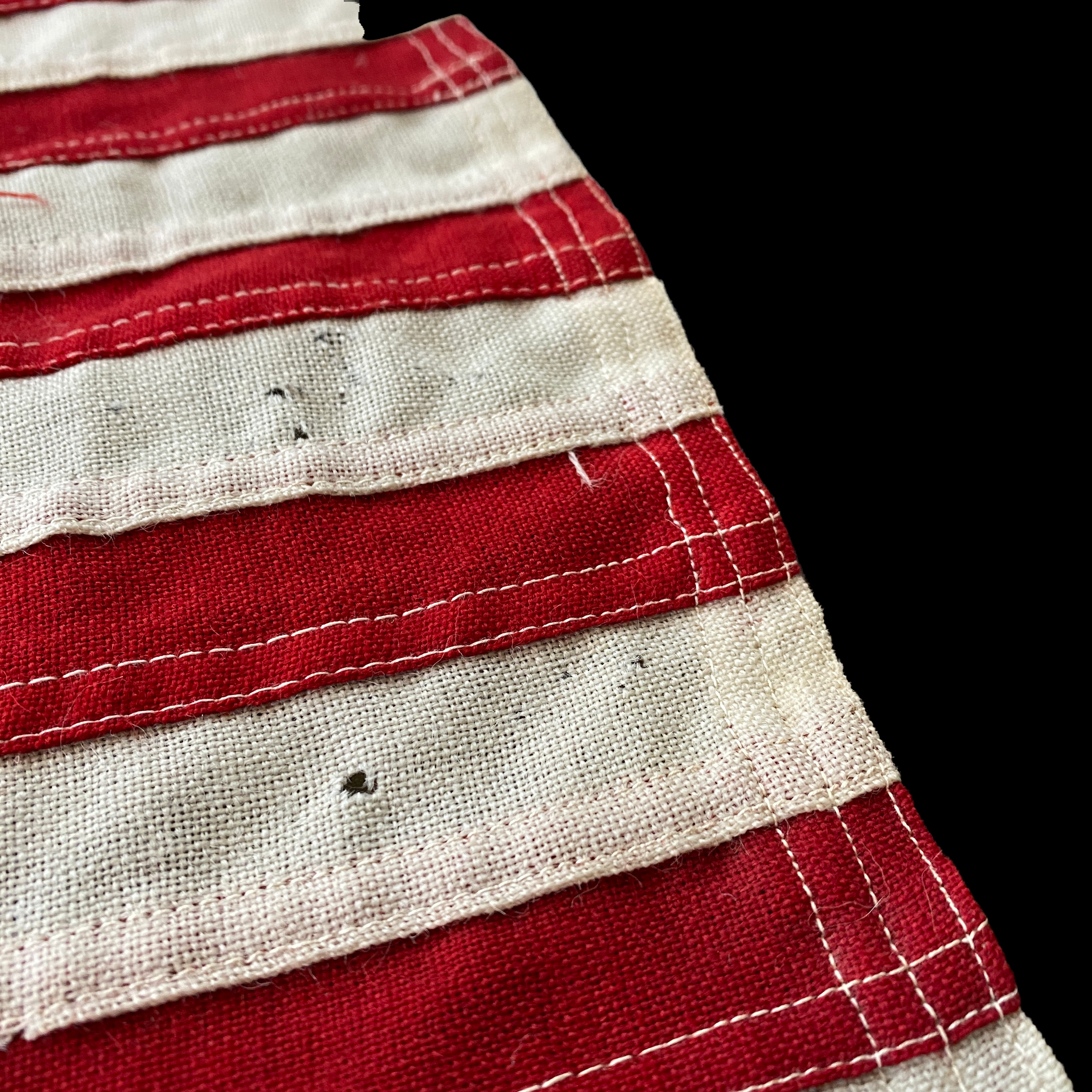
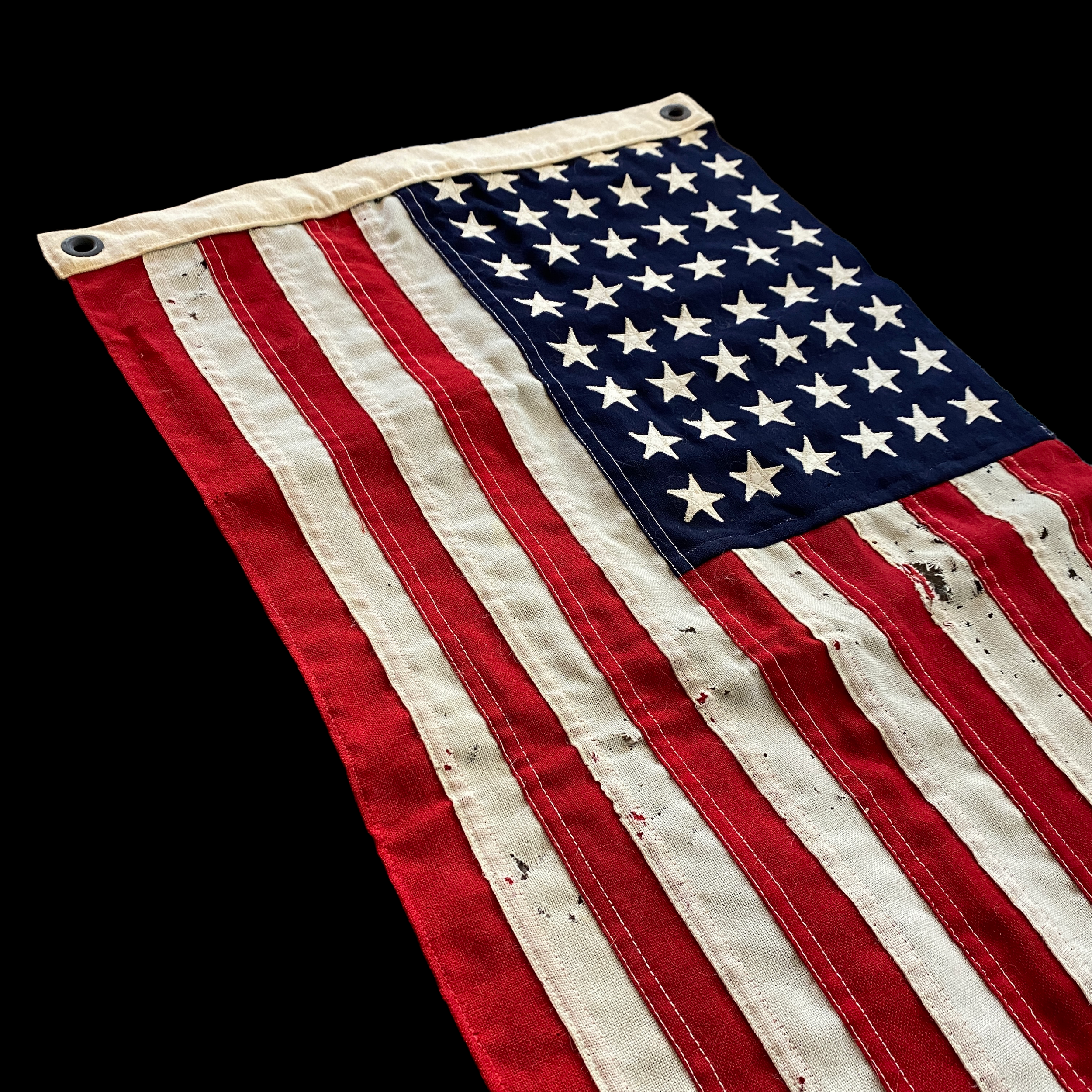

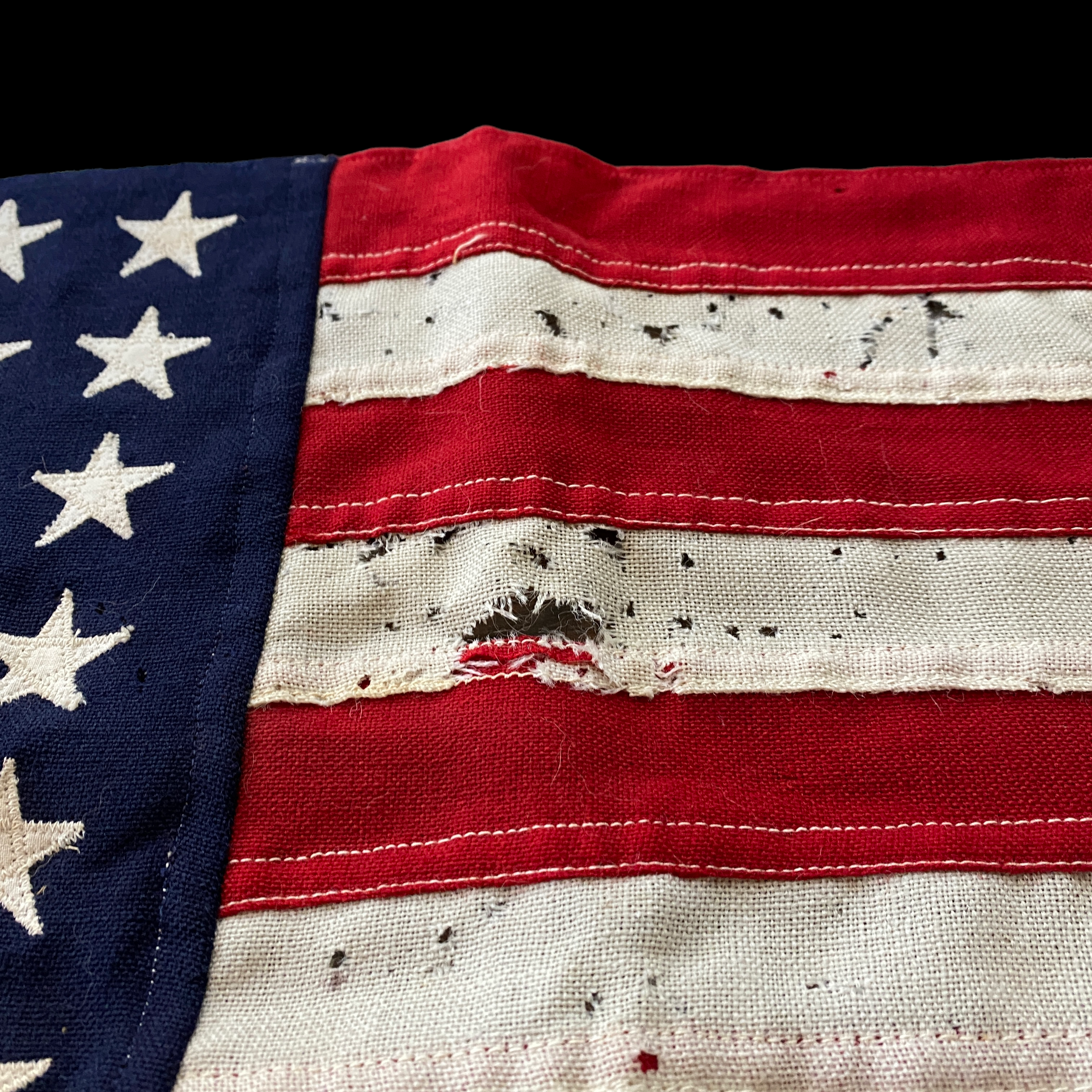
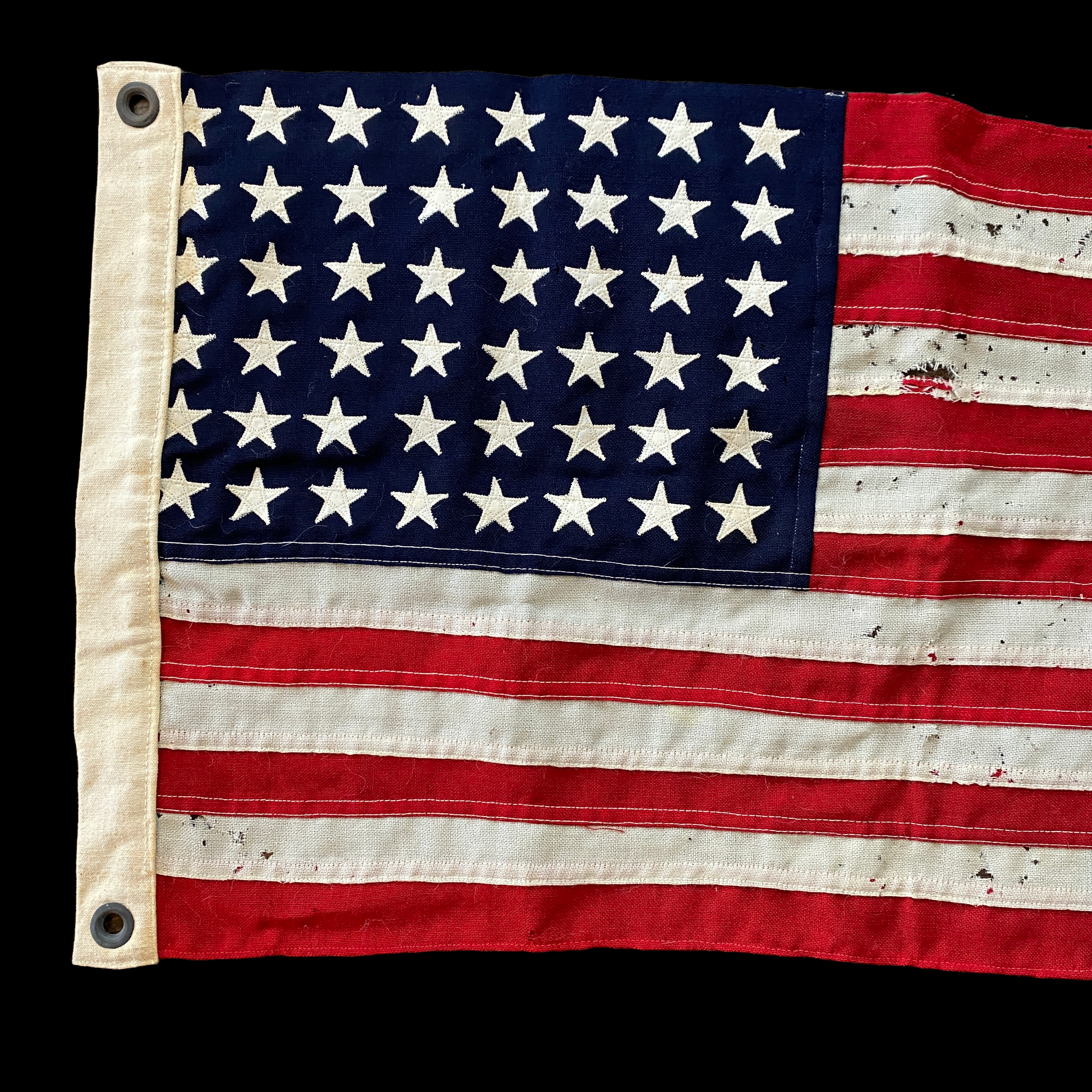
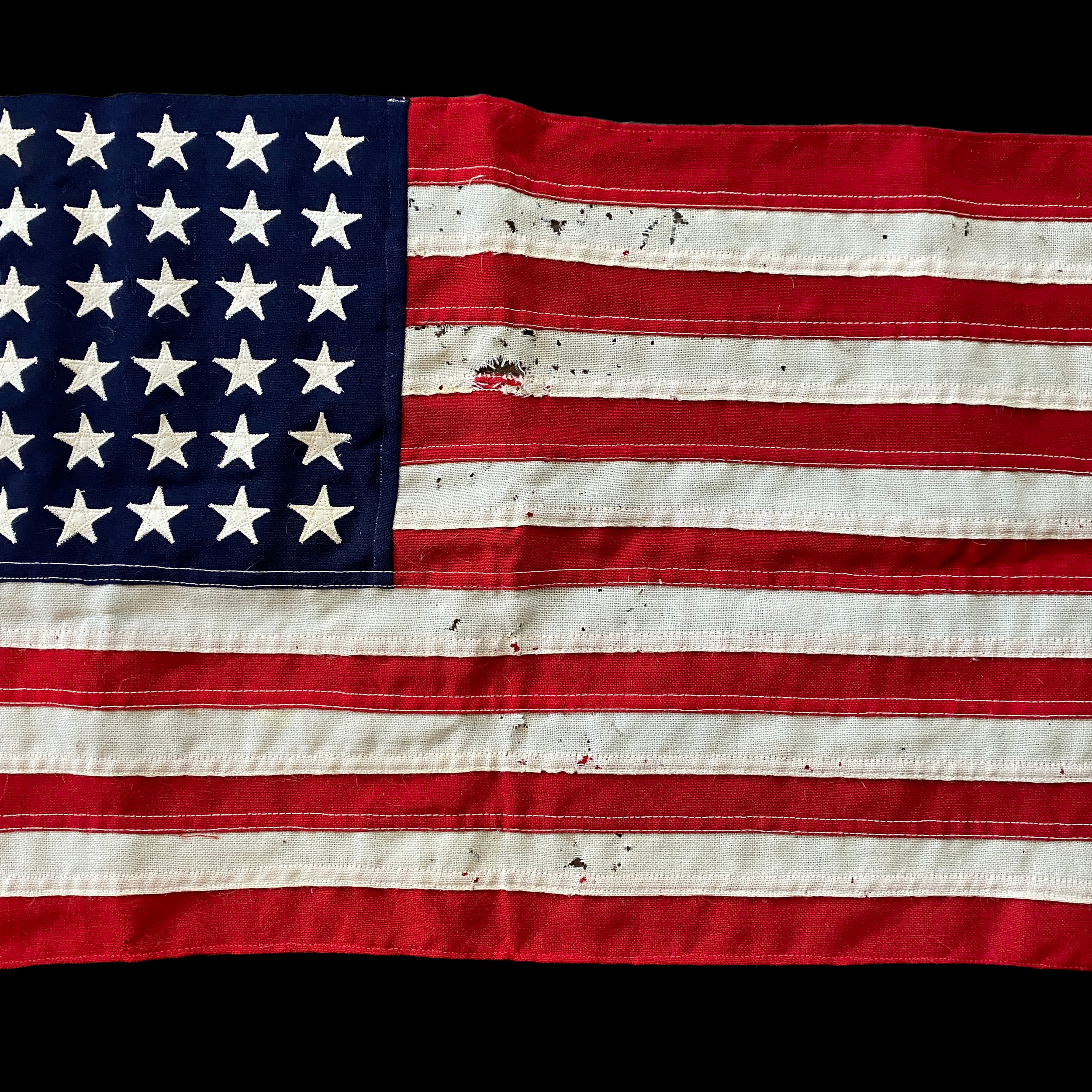
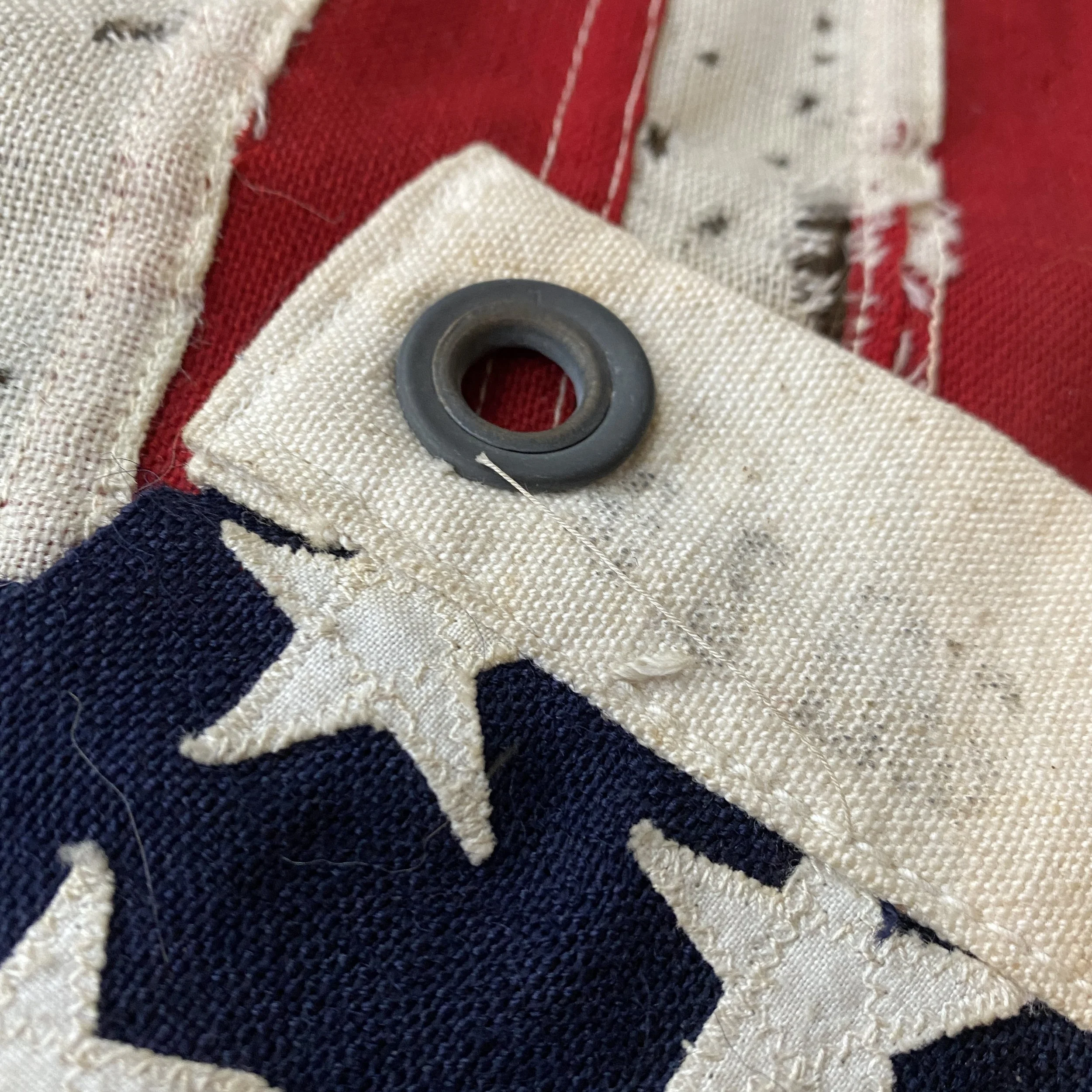
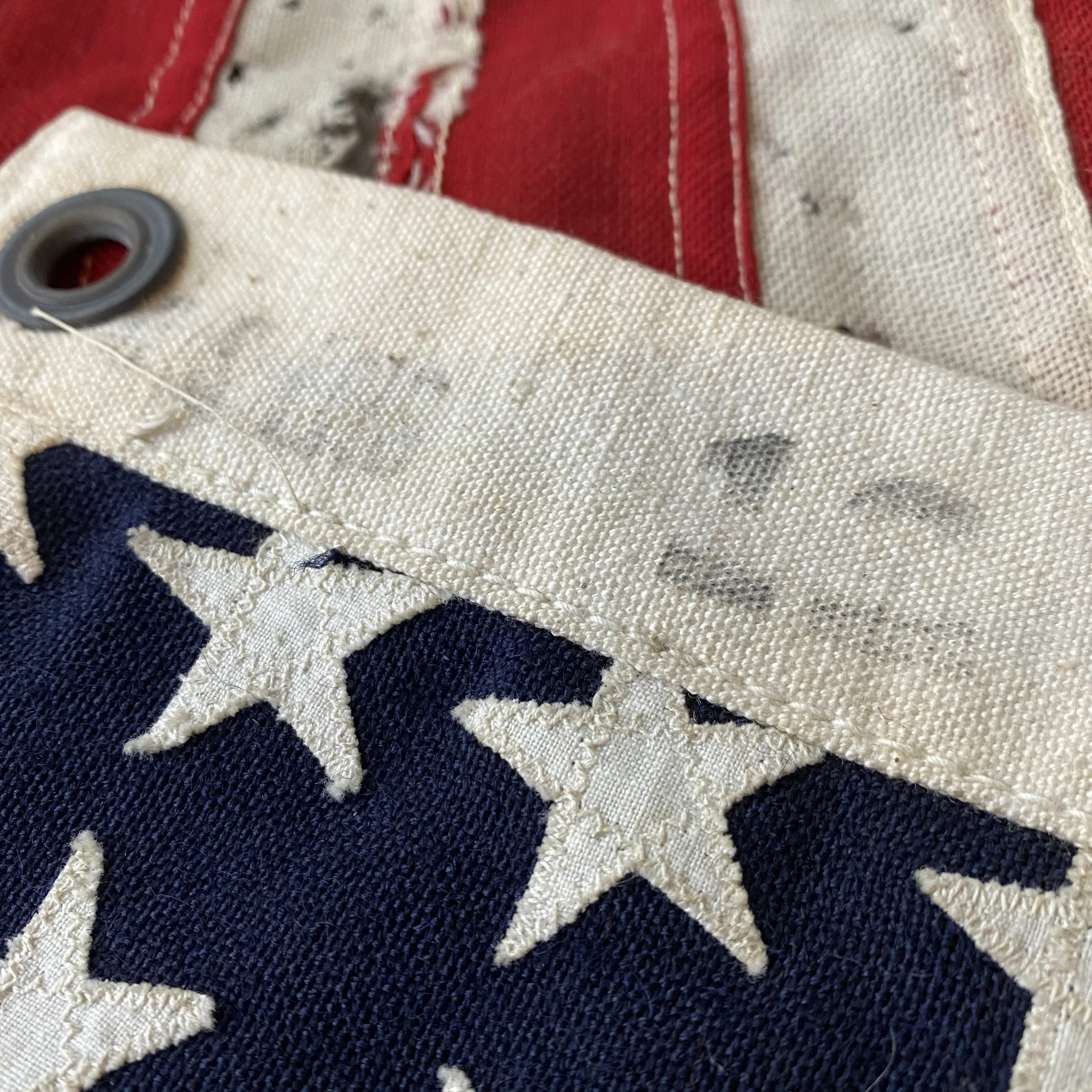


VERY RARE! WWII U.S. NAVY SMALL BOAT No. 12 Ensign Patrol Torpedo Boat Theater Flag
Comes with hand-signed C.O.A.
*In the second photo of this listing, you will see a digitally sourced photograph of an identical no. 12 flag type being used on the PT Boat during the D-Day landings. This is the historically documented description that is attached to that photograph “U.S. sailors, American flag flying between them, pointing twin .50 caliber towards sky in the MG nests on PT (Patrol Torpedo) boat during D-Day (Operation Overlord). Personal Caption: "D-Day Normandy. June 6 1944." Normandy, France. 6 June 1944”
This ‘salty’ and worn theater flown Patrol Torpedo Boat is the smallest ensign size produced for the U.S. Navy during World War II. This No. 12 stamped U.S.N. ensign flag comes from the Mare Island production line that also produced the same flags used on the aircraft carriers, destroyers, LCI (landing craft infantry), LCT (landing craft tank), and various other Naval ship types for both the European and Pacific Theater.
This flag shows great wear while still maintaining much of its original structure and fabric. The grommets are made of zinc which was common as a “wartime production” flag as the transition from BRASS to ZINC was done to save the brass for other uses for the war effort.
PT (Patrol, Torpedo) boats were small, fast, and expendable vessels for short-range oceanic scouting, armed with torpedoes and machine guns for cutting enemy supply lines and harassing enemy forces. Forty-three PT squadrons, each with 12 boats were formed during World War II by the U.S. Navy. PT boat duty was very dangerous and the squadrons suffered an extremely high loss rate in the war.
Based in New Orleans, Higgins Industries was a small boat company owned by Andrew Jackson Higgins. Higgins built a wide array of boats. Most World War II historians often equate the beach landing crafts used at Normandy and Iwo Jima simply as “Higgins boats." The first Higgins PT boats were used against the Imperial Japanese forces in the Battle for the Aleutian Islands and in the Mediterranean against Nazi Germany and her allies. They were used to support the D-Day landings on June 6, 1944. PT boats were used for harassing enemy shore installations, supporting friendly troop landings, destroying floating mines, sinking enemy shipping targets, destroying enemy landing barges, rescuing downed pilots, landing partisans behind enemy lines, and attacking enemy island outposts.
Perhaps the best known PT was skippered by Lieutenant and later U.S. President John F. Kennedy. An 80-foot Elco boat, PT-109 was operating in the Solomon Islands in the South Pacific and joined 14 other PT boats for a nighttime ambush of four enemy destroyers and supply ships of Japan’s “Tokyo express." Most of the PT boat attack force fired their compliment of torpedoes and headed for home, but three boats stayed behind including the 109. In the confusion and darkness at sea, Lieutenant Kennedy noted a vague shape approaching him. He assumed it was a sister PT boat, but soon discovered it was a Japanese destroyer. Kennedy attempted to swing his boat into position to fire a torpedo, but was not fast enough. The much larger destroyer hit the 109 broadside at full speed nearly splitting the much smaller wooden boat in half. Kennedy and the survivors swam nearly 3 miles to a small island. After a week of surviving on small islands with the help of Solomon Islands locals, Kennedy and the 109’s surviving crew were rescued by PT-157.
The Mare Island Naval Station in San Francisco Bay was home to what was known as the Pacific Fleet, however, their flags were used throughout all theaters war during WWII. Mare Island’s is highly recognized for providing flags for all of the amphibious assault craft and ships in 1944 for the Normandy landings which were the landing operations and associated airborne operations on Tuesday, 6 June 1944 of the Allied invasion of Normandy in Operation Overlord during World War II. Codenamed Operation Neptune and often referred to as D-Day, it was the largest seaborne invasion in history. The operation began the liberation of France (and later western Europe) and laid the foundations of the Allied victory on the Western Front.
This WWII landing craft flag is in heavily used and worn condition. Most of the used and worn WWII ENSIGN theater flags were usually taken down and kept by a Navy sailor or GI because it was flown during a major battle and operation or the ship was being damage repaired in a dock and they were kept as war souvenirs. Used landing craft flags from WWII were a very sought after war prizes as talked about by many WWII veterans
Mare Island Naval Shipyard was the first naval base on the west coast of the United States. It is 25 miles northeast of San Francisco, near Vallejo, California. During WWII the base was used for ship building and repair. There were 46,000 workers employed there during the war. It comprised over 900 buildings, and the base closed in 1996. The flag loft employed 500 workers, 400 women doing their part by working 8 hours a day 6 days a week.